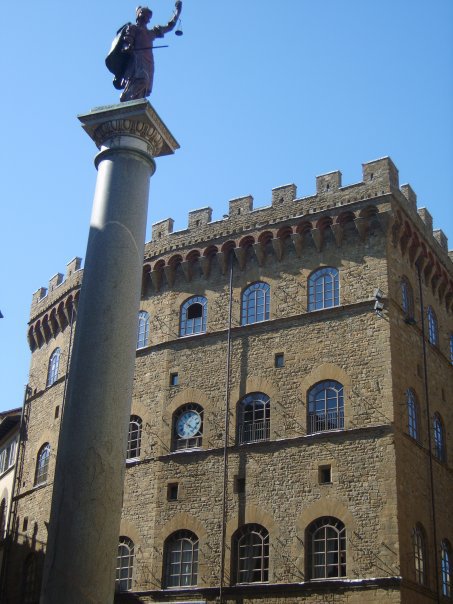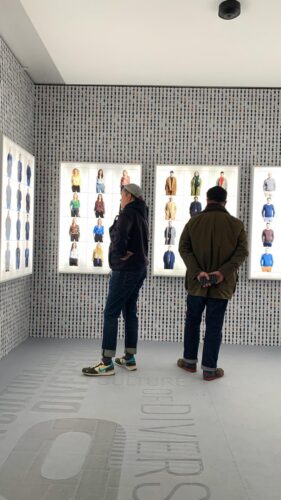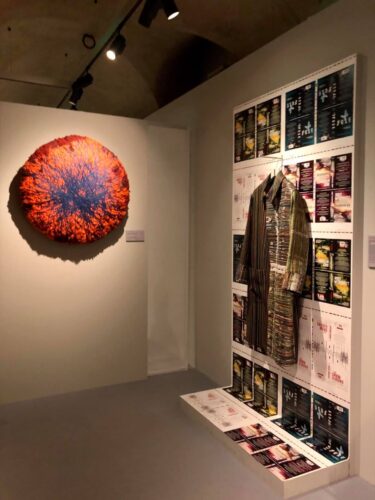Piazza Santa Trinita
Moving south via Tornabuoni street, we soon cameTornabuoni street, we come across the Piazza Santa Trinita. The square takes its name from the adjacent Basilica di Santa Trinita founded by the Vallombrosani monks in the middle of the 11th century. That very first church stood outside the city walls until the second line of protective walls was raised in the 1170s.
True to the ascetic principles of the order the first building was created in plain Romanesque style and remained unchanged until 1250 when the church became one of the first Gothic buildings in the city.
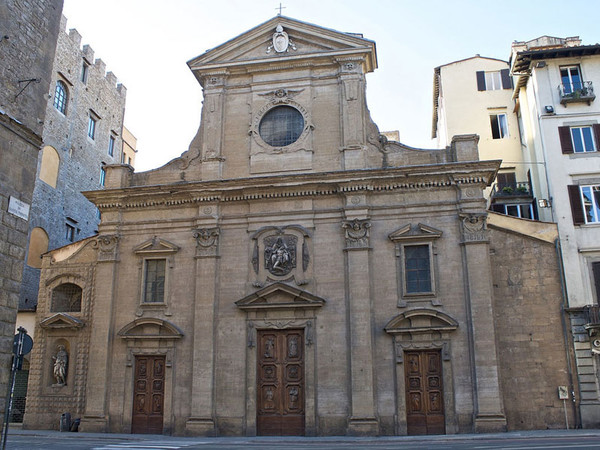
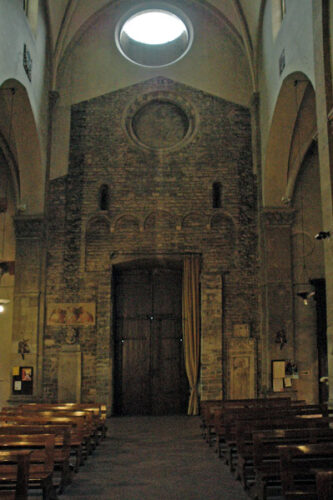
The facade of today’s church dates back to the late Renaissance period created by Buontalenti, one of the main Mannerist artists in Tuscany in 1593-1594. The back of the facade, inside the basilica, was untouched and still retains its Gothic appearance.
On the east side (the last chapel of the right transept) one can find the famous Sassetti Chapel, one of Florence’s most renowned Renaissance chapels, with amazing frescoes dedicated to the life of St. Francis of Assisi. Francesco Sassetti was a wealthy merchant in the service of the Medici.
He commissioned the chapel to Domenico Ghirlandaio, the most famous artist in Florence at the time, in 1483. This work is considered the artist’s masterpiece.
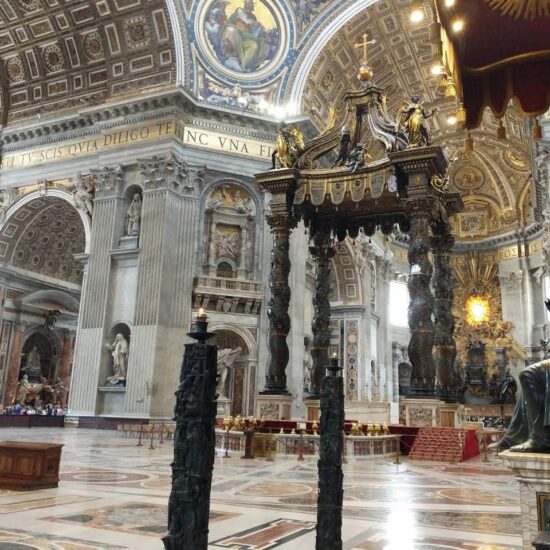
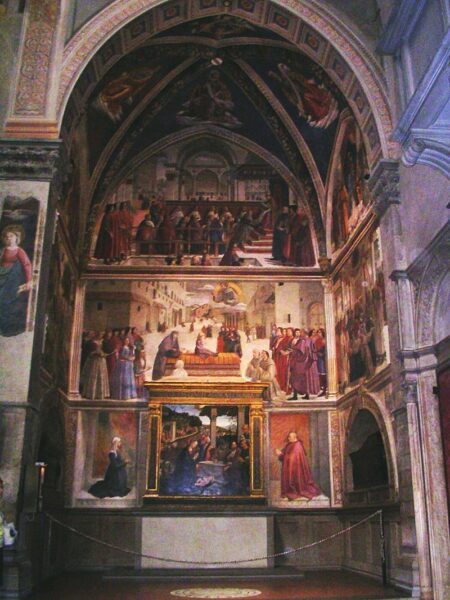
The chapel by the entrance on the right, with a valuable cycle of frescoes, the Life of the Virgin, by Lorenzo Monaco (1420-25). The frescoes were created at the behest of Bartolini Salimbeni. The Salimbeni was a rich noble family descended from Siena that built its palazzo on the opposite side of the square in 1520, in the place of an old soldier inn.
The Palazzo Bartolini Salimbeni was the first building in Florence built with square windows, unusual decorative columns, and protruding crowning cornices, in the contemporary Roman style. It was severely criticized by the Florentines during its first years of existence.
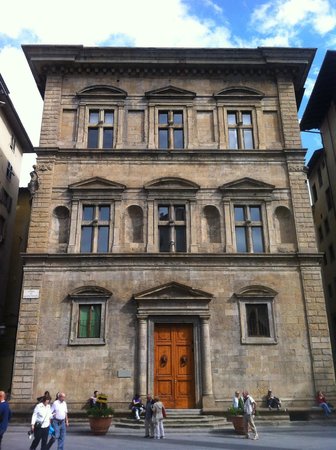
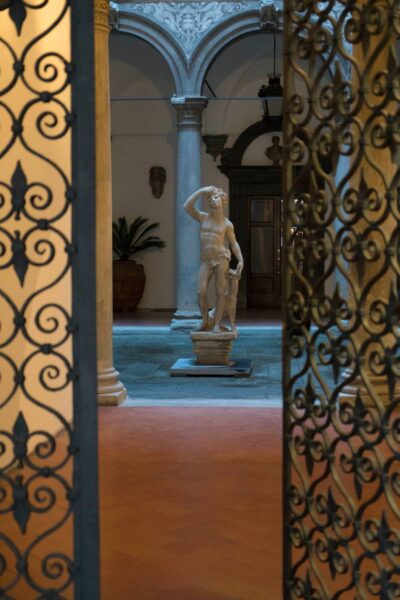
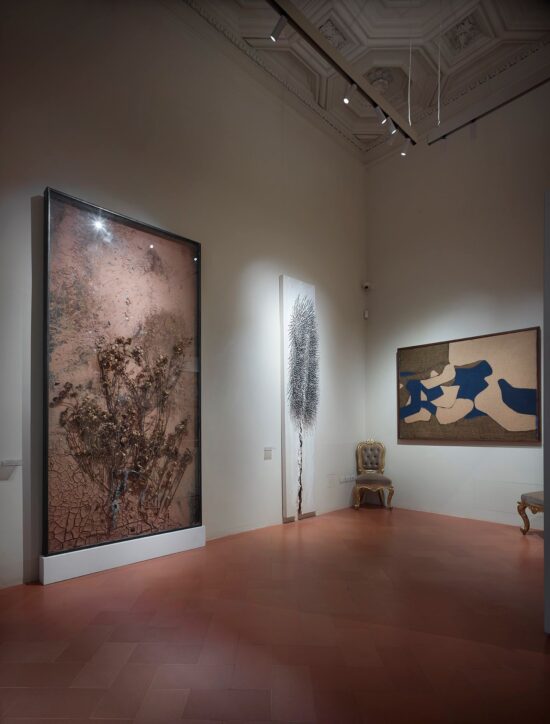
Feeling the need to answer, the architect carved forever the phrase “Carpere promptius quam imiti” (easier to blame than imitating) above the entrance door.
On the east side of the square a palace that followed all the rules of Florentine style in 1525, when the powerful Buondelmonti family started its construction. The Buondelmonti were forever intertwined with the city’s history when Buondelmonte de’ Buondelmonti was murdered during his wedding procession on Easter morning of 1216 near Ponte Vecchio.
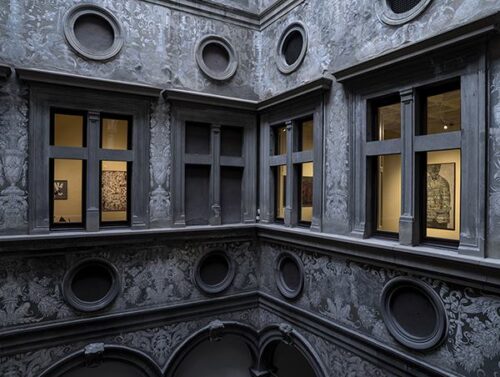
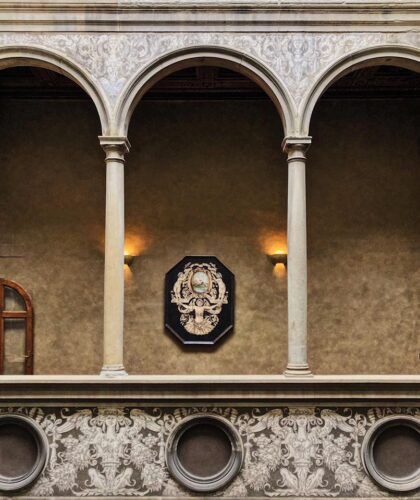
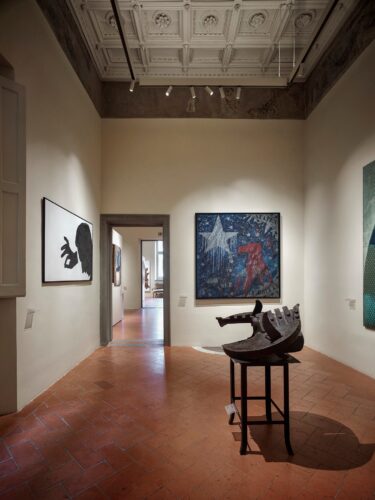
On the south side of the square, the once largest private palace in Florence, the Palazzo Spini Feroni. Built at a time of turbulent civil conflicts between families that many times lived on the same street, the palazzo was built as a fortress for the wealthy merchant and banker to Pope Boniface VIII Geri Spini in 1289.
The palazzo has known several owners over the centuries, from the Spini family to the Guasconi, Bagnano, and Feroni families. In 1846, the City of Florence bought the palace. From 1860 to 1870, when Florence was the capital of Italy, Palazzo Spini Feroni became the seat of the City Council. It returned to private ownership in 1881 when it was sold to a bank, the Cassa di Risparmio. Salvatore Ferragamo purchased the palace in 1938, making it the headquarters of his company and the location of his workshop.
The building’s restoration was completed in 2000 and its rooms now proudly showcase masterpieces of 17th and 18th-century Florentine art, including frescoes by Bernardino Poccetti in the chapel of the palace.
The underground floor, where the museum is situated, reveals the building’s Medieval roots. Over the centuries it has been used for many different purposes. In the early twentieth century, it housed one of the city’s most famous antiques galleries.
Outside the Ferragamo Museum (Palazzo Spini Feroni) an 11-meter-long column. The column given by Pope Pius IV to Cosimo I de Medici in 1563, bears the pink porphyry statue of Justice. It was created to celebrate the victory over Siena in the Battle of Marciano (August 2, 1554 ).
